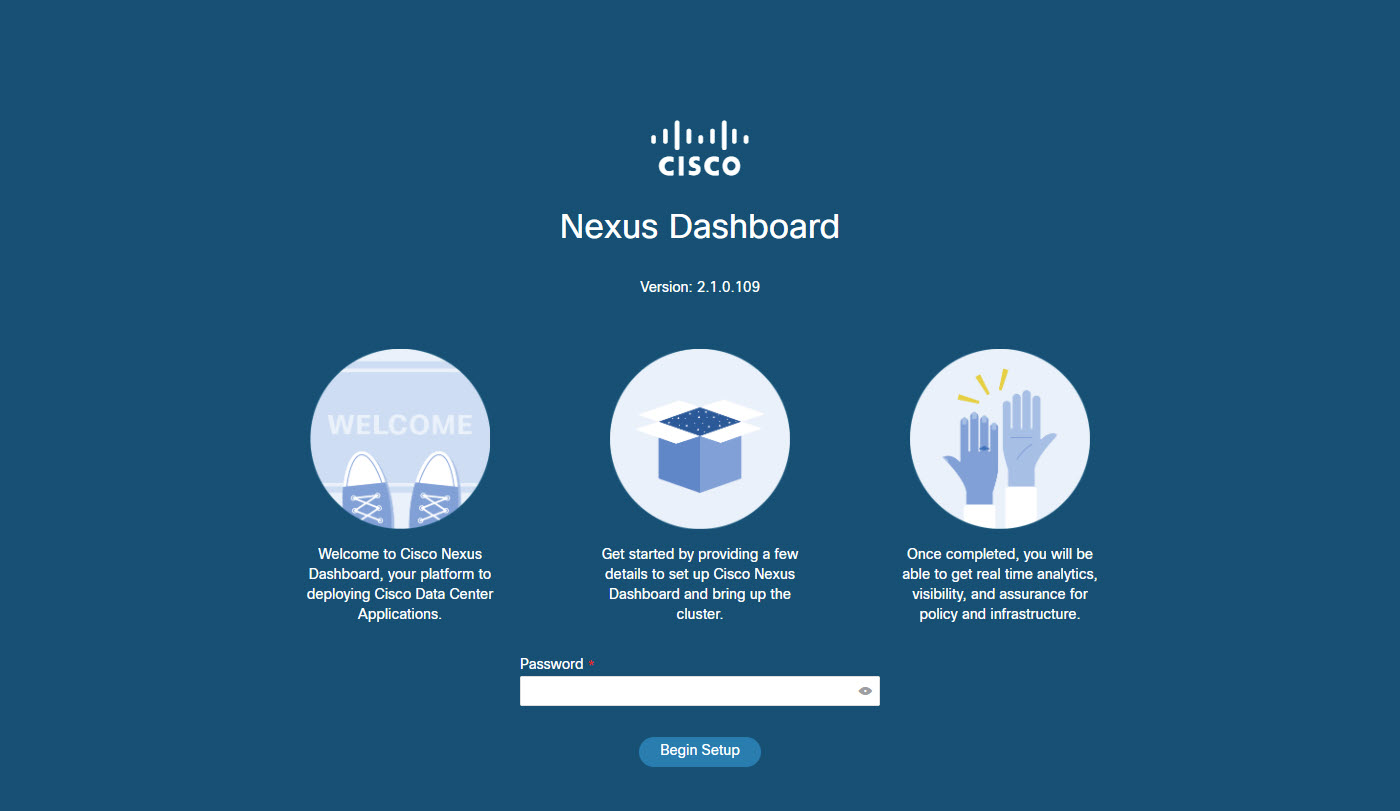Prerequisites and Guidelines
Before you proceed with deploying the Nexus Dashboard cluster, you must:
-
Review and complete the general prerequisites described in the Deployment Overview.
Note that this section describes how to initially deploy a three-node Nexus Dashboard cluster. If you want to expand an existing cluster with additional nodes (such as
workerorstandby), see the "Deploying Additional Nodes" section of the Cisco Nexus Dashboard User Guide instead.If you are looking to completely re-image the server, for example in case you cannot log in as the
rescue-userfor manual recovery, see the "Re-Imaging Nodes" section of the Cisco Nexus Dashboard User Guide.The guide is available from the Nexus Dashboard UI or online at Cisco Nexus Dashboard User Guide
-
Ensure you are using the correct hardware and the servers are racked and connected as described in Cisco Nexus Dashboard Hardware Installation Guide.
The physical appliance form factor is supported on the original Nexus Dashboard platform hardware only. The following table lists the PIDs and specifications of the physical appliance servers:
Table 1. Supported Hardware PID
Hardware
SE-NODE-G2
-
UCS C220 M5 Chassis
-
2x 10-core 2.2G Intel Xeon Silver CPU
-
256 GB of RAM
-
4x 2.4TB HDDs
400GB SSD
1.2TB NVME drive
-
UCS Virtual Interface Card 1455 (4x25G ports)
-
1050W power supply
SE-CL-L3
A cluster of 3x SE-NODE-G2appliances.
Note
The above hardware supports Nexus Dashboard software only. If any other operating system is installed, the node can no longer be used as a Nexus Dashboard node.
-
-
Ensure that you are running a supported version of Cisco Integrated Management Controller (CIMC).
Recommended version: CIMC, Release 4.1(3b).
Minimum supported version: CIMC, Release 4.0(1a).
-
Ensure that all nodes are running the same release version image.
-
If your Nexus Dashboard hardware came with a different release image than the one you would like to deploy, we recommend deploying the cluster with the existing image first and then upgrading it to the desired release.
For example, if the hardware you received came with Release 2.0.1 image pre-installed, but you want to deploy Release 2.0.2 instead, we recommend:
-
First, bring up the Release 2.0.1 cluster, as described in the following section.
-
Then upgrade to Release 2.0.2, as described in Upgrading Nexus Dashboard.
-
You must have at least a 3-node cluster. Up to four additional worker nodes can be added for horizontal scaling if required by the type and number of applications you will deploy.

 Feedback
Feedback